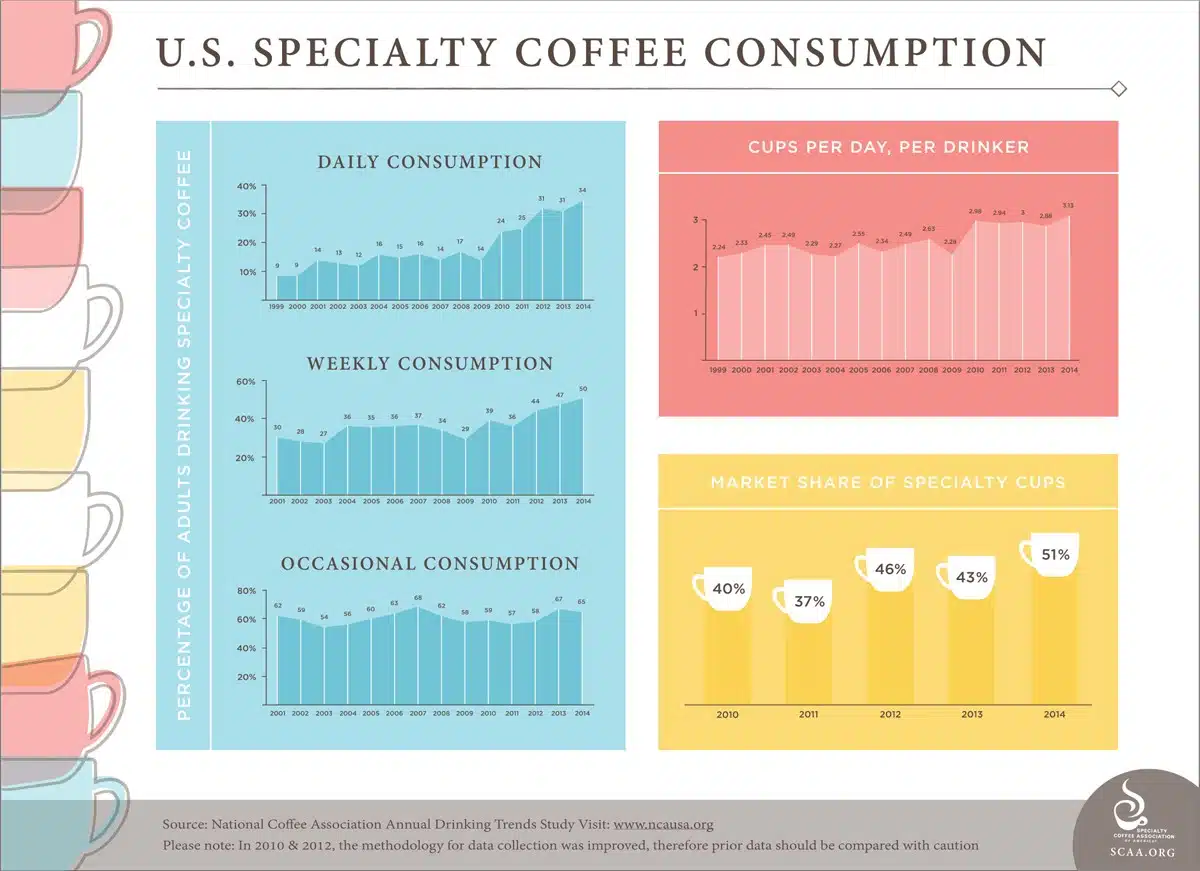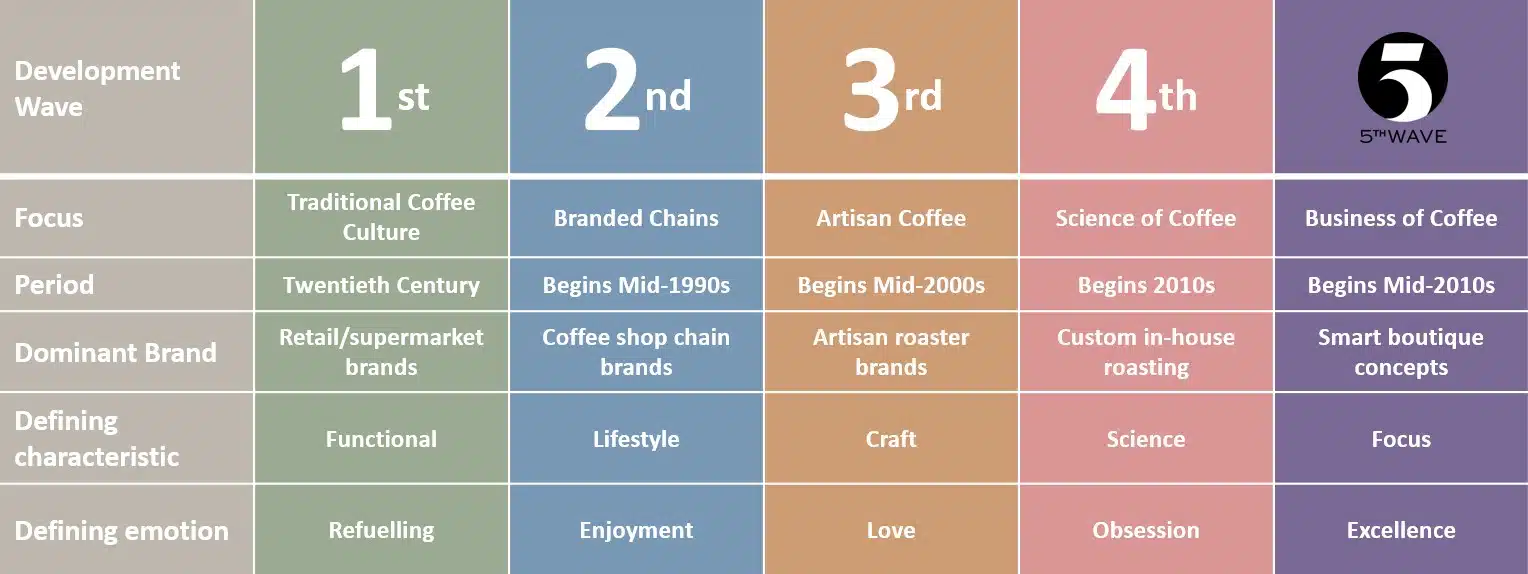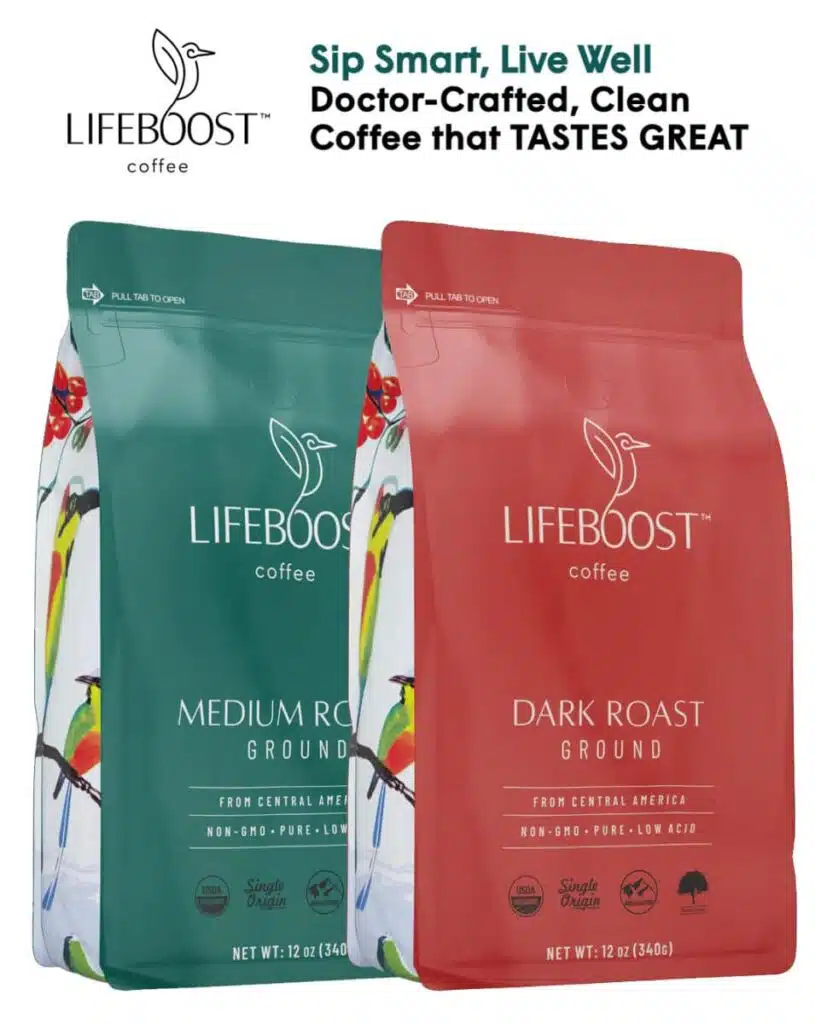Coffee isn’t just a morning ritual; it’s an evolving culture shaped by distinct trends, often referred to as “coffee waves.” From the mass production of the first wave to the artisanal craft of the third and even the forward-thinking fourth wave, these waves reflect how our love for coffee has transformed over the years. Join us as we dive into the history of coffee waves, exploring what makes each wave unique and how they influence our everyday coffee experience. Whether you’re a casual drinker or a dedicated aficionado, understanding these waves can enhance your appreciation of every sip.
Introduction to Coffee Waves
Let’s dive into the fascinating world of coffee waves! Each wave represents a unique shift in how we perceive, brew, and enjoy coffee. Over the years, coffee culture has evolved dramatically, moving from a simple morning ritual to a celebrated art form. Understanding these waves helps us appreciate the journey coffee has taken.
Here’s a brief overview of what each wave signifies:
- 1st Wave: The dawn of coffee as a commodity — think instant coffee and mass production.
- 2nd Wave: The advent of coffee shops and the gourmet experience — hello, lattes and cappuccinos!
- 3rd Wave: A focus on artisanal practices and a quest for unique flavors — time to explore single-origin brews!
- 4th Wave: The latest trends integrating technology and sustainability into coffee production and consumption — all while crafting the perfect cup.
Why does this matter? Each phase in the evolution of coffee waves reflects our growing appreciation for quality, sourcing, and brewing techniques. As coffee lovers, understanding these waves enables us to choose better and more enjoyable experiences. So, whether you’re just grabbing a quick cup on your way to work or savoring a meticulously brewed pour-over, knowing your coffee wave can transform your relationship with this beloved beverage!
What is the 1st Wave of Coffee?
The 1st Wave of Coffee marks the beginning of our love affair with this magical brew, predominantly spanning the late 19th century to the 1980s. It’s all about accessibility and convenience. During this period, commercial coffee brands like Folgers and Maxwell House became household names, making coffee a staple beverage in American homes.
Key Characteristics of the 1st Wave:
- Mass Production: The focus was on producing coffee in large quantities. Brands aimed to make coffee widely available at affordable prices.
- Instant Coffee: This wave saw the rise of instant coffee. Consumers could enjoy a quick cup without needing brewing expertise.
- Minimal Flavor Exploration: The emphasis was on functionality rather than flavor. Most people drank coffee to wake up or as a routine, ignoring origin and variety nuances.
- Convenience Over Quality: Pre-packaged coffee products dominated, with little attention paid to the sourcing of beans or brewing methods.
In essence, the 1st wave set the foundation for our coffee culture. It turned coffee into a commonality—something everyone could enjoy, even if it sacrificed the finer aspects of taste. However, this broad accessibility paved the way for what’s now known as the evolving coffee waves, leading to deeper explorations of flavor and quality in subsequent movements.
Characteristics of the 1st Wave
The 1st Wave of coffee marks the beginning of coffee commercialization, primarily from the 1800s until the 1970s. This era focused heavily on convenience and mass production. Here are some key characteristics that define the 1st Wave:
- Instant Coffee: Brands like Nescafé popularized instant coffee, making it easy for consumers to enjoy coffee quickly and without brewing.
- Commercialization: Coffee became widely available through grocery stores and vending machines, emphasizing low prices over quality.
- Uniformity: This wave prioritized consistency, often using blends that masked the unique flavors of individual coffee beans.
- Accessibility: The push for convenience led to the availability of coffee in almost every home, breaking traditional brewing methods.
- Lack of Variety: Most people consumed the same types of coffee, such as drip or instant, with little understanding of origin or flavor profiles.
To put it simply, the 1st Wave set the stage for future coffee movements but came at the cost of flavor and quality. While it made coffee a staple in households, many aficionados consider it a mere introduction to the rich world of coffee waves that would follow. In contrast, subsequent waves began emphasizing flavor diversity, transparency, and artisan production.
The Rise of the 2nd Wave
The 2nd Wave of coffee brought a wave of excitement and transformation to the coffee industry. Emerging in the 1980s, this movement focused on elevating coffee from a mere commodity to an experience. Here’s how it shook things up:
- Emphasis on Quality: Unlike the 1st Wave, where convenience was key, the 2nd Wave highlighted quality. Major brands began sourcing better beans, emphasizing flavors and brewing methods.
- The Café Culture: 2nd Wave coffee introduced cozy coffee shops where people could relax, socialize, and enjoy expertly brewed drinks. This was when espresso drinks like lattes and cappuccinos gained popularity.
- Branding and Experience: Companies like Starbucks started creating an atmosphere around coffee; they sold not just beverages but also a lifestyle. It became trendy to sip a cappuccino while lounging in a café, which truly shaped the coffee culture.
- Market Growth: This wave also saw a significant rise in the number of specialty coffee shops, creating competition that ultimately benefitted consumers.
| Feature | 1st Wave | 2nd Wave |
|---|---|---|
| Bean Quality | Low, mass-produced | Higher, quality-focused |
| Brewing Method | Basic instant/filters | Espresso, drip methods |
| Social Experience | Minimal coffee shops | Community-centric cafés |
| Popular Drinks | Black coffee, instant | Espresso drinks, flavored lattes |
As we can see, coffee waves evolved significantly from simply drinking coffee to enjoying the artistry behind it!

Exploring the 3rd Wave Movement
The 3rd Wave of Coffee is all about elevating coffee from a mere commodity to an artisanal experience. Unlike previous waves, this movement focuses on quality, transparency, and sustainability. Here’s a closer look at what defines the 3rd wave and why it matters:
- Quality Over Quantity: 3rd wave coffee emphasizes high-quality beans, often single-origin, handpicked, and sourced from farms that practice sustainable methods.
- Brew Methods: Expect to see various brewing techniques like pour-over, AeroPress, and Chemex that highlight the unique flavor profiles of the beans, allowing coffee enthusiasts to explore different notes and aromas.
- Coffee Education: Cafés embrace education, offering workshops and tastings. Here, baristas become guides who help customers understand the subtleties of their brew, bridging the gap between drinker and creator.
- Community Focus: This wave fosters a sense of community, inviting customers into the brewing process. Many shops create intimate environments where people can bond over their shared love of coffee.
Comparison: 2nd Wave vs. 3rd Wave
| Feature | 2nd Wave | 3rd Wave |
|---|---|---|
| Focus | Convenience and flavor | Quality and craft |
| Coffee Source | Blended, mass-produced | Single-origin, ethically sourced |
| Brewing Techniques | Espresso machines, drip coffee | Hand brewing methods |
| Consumer Interaction | Minimal, fast-paced service | Educational and engaging |
In essence, the 3rd wave movement transforms how we experience coffee, making it a richer and more mindful cultural experience. So, take a moment to savor those coffee waves—there’s a whole world of flavor to explore!
Key Differences Between 2nd and 3rd Waves
Understanding the differences between the 2nd and 3rd waves of coffee can help you appreciate the evolution of coffee culture. Both waves emphasize quality but approach it in unique ways. Here’s a breakdown of the key differences:
| Feature | 2nd Wave Coffee | 3rd Wave Coffee |
|---|---|---|
| Focus | Convenience and consistency | Quality, artisanal methods |
| Brewing Methods | Espresso-based drinks, chains | Pour-over, manual brewing techniques |
| Bean Source | Generic blends from large producers | Single-origin, often sourced directly from farmers |
| Taste Profile | Sweet, creamy drinks (think lattes) | Complex flavors, highlighting origin characteristics |
| Community Involvement | Social spaces (coffee shops) | Coffee education and experiences |
| Branding | Mass marketing | Emphasis on craft and story behind the beans |
In the 2nd wave, coffee shops like Starbucks introduced a more sophisticated coffee experience, making it accessible and convenient. You’d often find sugary, creamy beverages dominating the menu.
On the flip side, the 3rd wave celebrates coffee as a specialty item. It digs deeper into the origins and flavors, treating each cup like fine wine. You’ll notice that baristas take pride in their brewing methods, aiming to highlight the unique characteristics of each bean.
Ultimately, understanding these coffee waves can elevate your coffee experience, helping you choose what aligns best with your taste preferences. So whether you’re in the mood for a comforting latte or a single-origin pour-over, there’s a coffee wave for everyone!
What’s Brewing in the 4th Wave?
The 4th wave of coffee represents an exciting new chapter in the ever-evolving world of this beloved beverage. It’s not just about the drink anymore; it’s a deep dive into the entire coffee experience. Here’s what you need to know:
- Focus on Sustainability: This wave emphasizes ethical sourcing and sustainable practices. Consumers demand that their coffee beans come from farms that prioritize environmental impact and fair labor practices.
- Artisan Techniques: Coffee brewing has transformed into an art form, where baristas are seen as skilled artisans. Methods like siphon brewing, nitro coffee, and cold brew are more popular than ever, with each technique bringing out unique flavor profiles.
- Personalization: The 4th wave encourages customers to tailor their coffee experiences. From choosing bean origins to selecting the perfect brewing method, coffee lovers can now explore their personal preferences like never before.
- Technology Integration: Smart coffee makers and mobile apps are changing the game, allowing users to track their brewing and learn about different varieties. Innovations are enhancing how we enjoy our daily cup.
In summary, the 4th wave of coffee waves not only highlights quality and sustainability but also creates an interactive and personalized journey for consumers. As this wave continues to rise, we can expect even more exciting developments in the coffee culture.

Future Trends in Coffee Culture
As we look ahead, the future of coffee culture is brewing up some exciting trends that enthusiasts will love. The evolution through the coffee waves has set the stage for innovation and deeper appreciation of this beloved beverage. Here are some trends to watch:
- Sustainability: Consumers increasingly prioritize eco-friendly practices. This includes more sustainable sourcing, compostable packaging, and conscious brewing methods. Expect a rise in brands that adhere to ethical standards.
- Specialized Brews: Just like the artisanal movements of the 3rd wave, we’ll see micro-roasteries and niche cafés focusing on unique flavor profiles. Think single-origin beans and bespoke brewing methods that elevate coffee tasting experiences.
- Technology Integration: Smart coffee machines and apps that enhance brewing by optimizing water temperature and grind size will become commonplace. Coffee enthusiasts can enjoy the perfect cup with just a few taps on their mobile devices.
- Health Consciousness: With a growing emphasis on wellness, we’re witnessing the rise of functional coffees infused with adaptogens, superfoods, and other health-boosting ingredients.
- Community Engagement: More cafés will become community hubs, emphasizing local artists and musicians. Social interactions around coffee will strengthen local bonds, moving beyond just a caffeine fix.
These trends promise to redefine our coffee experiences, making the coffee waves even richer and more diverse. Keep an eye out, because the future of coffee culture is both thrilling and fulfilling!
How to Identify Your Coffee Wave Preference
Finding your coffee wave preference can be a fun and adventurous journey! With each coffee wave representing a unique style and philosophy, you have plenty of options to explore. Here are some tips to help you identify which wave resonates with you the most:
- Consider Your Taste:
- 1st Wave: If you enjoy classic, straightforward brews like instant coffee, you might be a fan of the 1st wave.
- 2nd Wave: A taste for cream and sugar-laden lattes or frappuccinos? That points towards the 2nd wave, where convenience meets flavor.
- 3rd Wave: Are you drawn to single-origin beans and manual brewing techniques? If you relish discovering unique flavor notes in your cup, you’re likely part of the 3rd wave.
- 4th Wave: If sustainability and innovation in coffee production excite you, then you might be leaning towards the 4th wave.
- Explore Preparation Methods:
- Experiment with different brewing methods, from drip coffee to AeroPress to pour-over. Each wave typically embraces specific techniques that align with its philosophy.
- Engage with Cafés:
- Visit local cafés and observe their approach to coffee. Ask baristas about their brewing styles—many places embrace a particular wave and can help you discover your own preferences.
By reflecting on your preferences for flavor, preparation, and café experiences, you can easily identify where you fit in the evolving world of coffee waves!
Conclusion: The Evolution of Coffee
As we wrap up our journey through the fascinating coffee waves, it’s clear that coffee culture has evolved remarkably over the decades. Each wave represents a unique phase in how we perceive and consume coffee, adapting to our tastes and lifestyles.
- 1st Wave: The mass production era, where coffee became ubiquitous and convenience ruled the day.
- 2nd Wave: This phase brought a focus on café culture, introducing us to espresso drinks and branding.
- 3rd Wave: Here, we embraced artisanal coffee, paying attention to sourcing methods and flavors.
- 4th Wave: The potential emergence of experiences like coffee-based beverages with a scientific twist and a focus on sustainability might redefine how we enjoy our daily brew.
As our appreciation for coffee waves deepens, we witness innovation and a cultural shift towards coffee as not just a drink, but an experience. The future promises even more advancements, especially with technology influencing brewing methods and sustainability practices.
Your coffee journey reflects personal discovery. So, whether you’re clinging to the nostalgia of the 1st wave or exploring the intricacies of the 3rd or even the 4th, there’s never been a better time to enjoy your favorite cup. So grab your mug, and embrace the evolution of coffee waves!

Frequently Asked Questions
What are the different waves of coffee?
The waves of coffee represent distinct movements in the way coffee is produced, brewed, and consumed. The 1st wave focused on mass production and convenience, leading to instant coffee and supermarket brands. The 2nd wave introduced specialty coffee shops, promoting quality and unique flavors, with brands like Starbucks leading the charge. The 3rd wave emphasizes transparency, artisanal methods, and direct trade, highlighting single-origin beans and sophisticated brewing techniques. The emerging 4th wave is still being defined but often revolves around advanced technology in brewing, sustainability, and new flavor explorations.
How do the waves of coffee impact taste and quality?
Each wave of coffee has significantly impacted both taste and quality. The 1st wave prioritized production speed and accessibility, often sacrificing flavor for mass consumption. The 2nd wave raised the bar with a focus on quality and the unique flavor profiles of different roasts and blends. The 3rd wave revolutionized coffee tasting by valuing distinct origins and artisanal brewing methods, leading to a broader appreciation of complex flavors. As we enter the 4th wave, the focus seems to shift towards innovative brewing technology and sustainable practices that enhance both flavor and the coffee experience.
What is the significance of the 3rd wave of coffee?
The 3rd wave of coffee marks a pivotal shift in the coffee culture by treating coffee not just as a commodity, but as an artisanal product. This wave emphasizes the importance of coffee’s origin, growing conditions, and flavor nuances. It encourages consumers to take an interest in sourcing and brewing techniques, fostering a deeper appreciation for the craft. Coffee shops in this wave often provide detailed information about their beans, such as the farmers and regions they come from, making the coffee experience more educational and fulfilling.
Can I taste the difference between the coffee waves?
Absolutely! Tasting the difference between the coffee waves can be quite enlightening. In the 1st wave, you might find coffee to be overly simplistic and mass-produced, with flavors that are often muted. The 2nd wave, however, introduces more layered and robust flavors thanks to better roasting techniques. In the 3rd wave, you’re in for a treat with complex profiles that highlight the nuances of the coffee’s origin, as producers care about showcasing the unique characteristics of their beans. As for the 4th wave, it offers an exciting frontier where technology meets artisanal techniques, potentially leading to unexpected flavor experiences.
What are some common brewing methods associated with each coffee wave?
Each wave has its preferred brewing methods that reflect the trends of the time. For the 1st wave, instant coffee was king, with drip brewers being the standard method. The 2nd wave introduced espresso machines, allowing for a higher quality brew but still focusing on convenience. The 3rd wave showcases a variety of methodical brewing techniques such as pour-over, Aeropress, and Chemex, encouraging precision and appreciation for the coffee being brewed. As we venture into the 4th wave, methods are evolving, possibly incorporating advanced gadgets and scientific approaches to ensure optimal flavor extraction.

